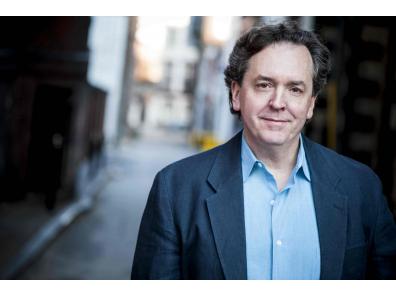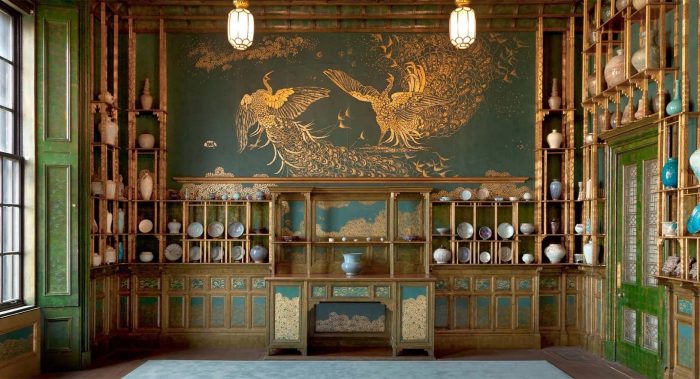A few of my favorite things: Franklin Robinson
Smithsonian staff and volunteers work countless hours in the halls of our museums and research centers, in the field, at the Zoo, in our gardens and facilities. We are privileged to spend time with some of the nation’s most cherished treasures as we go about our duties. Sometimes, these unique experiences find a special place in our own personal stories. Amy Kehs introduces Franklin Robinson and a few of his favorite Smithsonian things.
More than 30 years ago, Franklin A. Robinson, Jr. was going through his late mother’s things. Franklin’s family had lived on the family farm for generations and it was full of treasures. He found some clothes from the 1960s that were in really good condition and on a whim, he called the Smithsonian’s National Museum of American History to see if they would be interested in having them. He spoke to then costume curator, Claudia Kidwell, who accessioned the items and a collecting relationship began between Franklin and the museum. Later, he inquired about donating his family’s papers to the museum’s the Archives Center but discovered that, although they would love to accept the documents, the center simply did not have the staff to process the accession. Franklin was asked if he would be interested in volunteering to help. The rest, as they say, is history. Quite literally, in Franklin Robinson’s case.

Franklin A. Robinson Jr.
Three decades later, Franklin is an archivist in the Archives Center at NMAH. He works with the Archives’ processing team to prepare paper and film collections for long-term preservation and research use. He has processed many collections in many different subject areas, including agriculture, popular culture, the LGBT+ community, and the performing arts. Franklin’s interests are as eclectic as the collections he works on: He teaches at George Mason University and is a professional actor, playwright and filmmaker, as well as the author of Faith & Tobacco, published in 2015. He also volunteers as the chair of the Charles County Historic Preservation Commission, is a board member of the Maryland Association of Historic Districts Commission, and the National Episcopal Historians and Archivists. He is a trustee on the board of the Maryland Historical Trust and a member of the Society of American Archivists.

“The Harvey Girls,” a Metro-Goldwyn-Mayer Production. Music by Harry Warren, lyrics by Johnny Mercer. (NMAH Archives Center, The Harry Warren Collection)
So, what drew Franklin to the Archives to begin with? “I love the process of creating order out of chaos,” he says. Every piece of paper he encounters tells its own story or leads to another story. Some of his favorite projects have included archiving issues of Gay Power, New York City’s first post-Stonewall gay newspaper, which had a brief run covering the city’s gay culture and politics between September 1969 and June 1970; and processing the papers of composer Harry Warren (“Lullaby of Broadway,” “I Only Have Eyes For You,” “42nd Street” and many others), who was the first American songwriter to write primarily for film. Helping to organize these artifacts for researchers has been a dream job for Franklin.
Franklin’s first favorite thing at the Smithsonian is the Kogod Courtyard at the Donald W. Reynolds Center for American Art and Portraiture. The Robert and Arlene Kogod Courtyard features a spectacular wavy glass–and–steel roof that appears to float over the courtyard, letting in natural light but protecting visitors from the elements. Soaking up the light below are beautiful gardens, fountains and seating for the museum’s café. Franklin says that it reminds him of a similar glass-ceilinged courtyard at the British Museum in London—no surprise since the architects, Foster + Partners, are the very same ones that did the Great Court at the British Museum.

The Kogod Courtyard is shared by the Smithsonian’s National Portrait Gallery and the American Art Museum at the Donald W. Reynolds Center.

The Kogod Courtyard is shared by the Smithsonian’s National Portrait Gallery and the American Art Museum at the Donald W. Reynolds Center.
Franklin’s second favorite thing at the Smithsonian is the Enid A. Haupt Garden, the four-acre garden behind the Smithsonian Castle. The Haupt Garden opened in 1987 as part of the redesigned Castle quadrangle. It features three distinct smaller gardens, the Parterre, the Moongate Garden and the Fountain Garden. Through these three distinct smaller gardens, the Haupt Garden brings together the culture and architecture of the surrounding museums and Smithsonian buildings. While wandering the brick paths, admiring tulip magnolias in the spring, or enjoying the sound of splashing fountains in the summer, visitors to the Haupt Garden may not realize that they are actually visiting a rooftop garden and they are standing on top of the National Museum of African Art, the Arthur M. Sackler Gallery, and the S. Dillon Ripley Center.

The Enid A. Haupt Garden, the four-acre garden behind the Smithsonian Castle, opened in 1987 as part of the redesigned Castle quadrangle. Photo credit: Jeff Tinsley
Franklin’s third favorite thing at the Smithsonian is the Peacock Room in the National Museum of Asian Art. The Peacock Room has been captivating visitors since it was installed in 1923. The dining room was originally part of shipping magnate Frederick Leyland’s London mansion. The room was in the middle of renovation when the architect, Thomas Jekyll, became ill. Leyland asked artist James McNeill Whistler, whose painting, “Rose and Silver: The Princess from the Land of Porcelain” was already installed as the centerpiece of the room, to complete the renovations.

James McNeill Whistler, La Princesse du pays de la porcelaine (The Princess from the Land of Porcelain), 1865.
Leyland thought Whistler would just make a few final alterations to the almost-complete room, but what he saw when he returned from a lengthy trip enraged him. Whistler had completely transformed the space, painting over over Leyland’s expensive, imported leather wall coverings, gilding the room’s shelving, and covering the ceiling with a blue, green, and gold peacock motif. Leyland refused to pay Whistler’s bill for the work and, in frustration, Whistler left one final surprise for his former patron: a mural of two fighting peacocks titled Art and Money; or, The Story of the Room.

James McNeill Whistler’s “Peacock Room” with the mural “Art and Money; or, The Story of the Room”
Franklin concludes by saying that the best part of working at the Smithsonian is that no two days are the same. He loves discovering the stories of both the ordinary and extraordinary people in the work that he does and the part he plays in preserving their stories for future generations.
Posted: 18 June 2024
- Categories:



